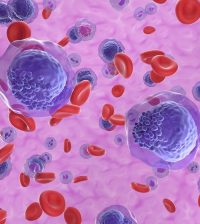- Navigating Your Midlife Crisis: Embracing New Possibilities
- City Raccoons Showing Signs of Domestication
- Mapping the Exposome: Science Broadens Focus to Environmental Disease Triggers
- One Week Less on Social Media Linked to Better Mental Health
- Your Brain Changes in Stages as You Age, Study Finds
- Some Suicide Victims Show No Typical Warning Signs, Study Finds
- ByHeart Formula Faces Lawsuits After Babies Sickened With Botulism
- Switch to Vegan Diet Could Cut Your Greenhouse Gas Emissions in Half
- Regular Bedtime Does Wonders for Blood Pressure
- Dining Alone Could Mean Worse Nutrition for Seniors
What Is That Ice Cream-Induced ‘Brain Freeze,’ Anyway?

Anyone who has quickly slurped up a milkshake or chomped on a snow cone knows the sharp, brief pain of “brain freeze.”
Its cause is a mystery, but it’s not harmful, according to experts at University of Texas Southwestern Medical Center in Dallas.
“It is very common and happens more frequently in children,” said Dr. Ashley Agan, assistant professor of otolaryngology–head and neck surgery.
“Some studies suggest that patients who experience migraine headaches may be more susceptible to brain freeze headaches,” Agan said in a center news release. “In general, it is a very quick pain that dissipates in minutes.”
Inhaling freezing air too quickly or diving into cold water can also cause brain freeze.
But brain freeze is only a nickname. Scientifically, it’s called sphenopalatine ganglioneuralgia. It’s sometimes referred to as a cold-stimulus headache or ice cream headache.
One theory about why it happens is that sudden exposure to cold triggers rapid vasoconstriction, or narrowing of blood vessels. Widening of the blood vessels, vasodilation, then follows.
This activates pain receptors in the blood vessel walls, sending the pain signal through the sensory nerves of the head and face.
Agan said the easiest way to prevent brain freeze is to slow down while eating or drinking cold items.
Hold the ice cream or ice pop in the front of your mouth for a few seconds to warm it up before swallowing, she suggested.
When brain freeze strikes, remove the cold food and press your tongue or thumb to the roof of your mouth to warm it up. Drinking warm or room-temperature water may also help.
More information
The U.S. National Institute of Neurological Disorders and Stroke has more on headaches.
SOURCE: UT Southwestern Medical Center, news release, Aug. 21, 2023
Source: HealthDay
Copyright © 2025 HealthDay. All rights reserved.










